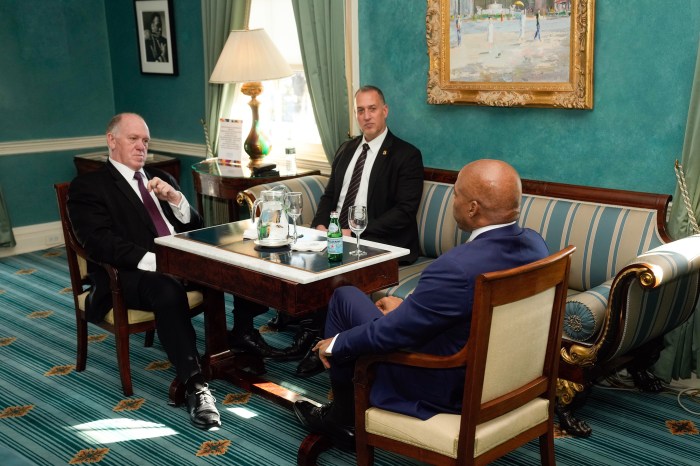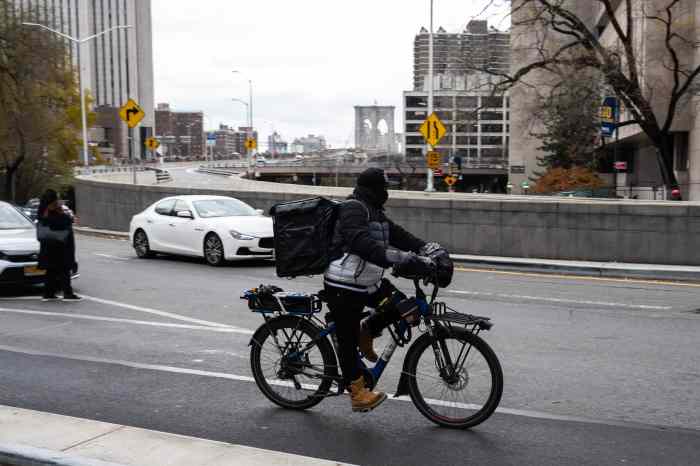
It all started with a Smokey Bear hat.
Several months after being named New York City Parks Commissioner in January 1978, Gordon Davis toured Riis Park and spotted a national parks service ranger wearing the distinctive, large brimmed hat.
“My first thought was that I wanted one of those hats,” Davis recalled to amNewYork with a laugh. “Then I said ‘That’s what we need — some people looking cool and getting people’s attention.’ ”
Davis knew he had to be creative. He was charged with rebuilding a parks system worn down by years of vandalism, crime and scant maintenance during the fiscal crisis.

“We had people picking up paper, but we didn’t have anyone affirmatively engaging the public,” Davis said.
Less than a year later, the first class of Urban Park Rangers stood on the steps of City Hall with Mayor Ed Koch and Davis. Their mission was to reconnect New Yorkers with their green spaces.
As the program celebrates its 40th anniversary this year, Davis and others look back at the gutsy experiment that ultimately generated decades of leaders for city parks.
“I saw the program from the very beginning as a way to bring people into the Parks Department who would have new approaches to problems — people who would stay,” Davis said.
Former city Parks Commissioner Adrian Benepe was a graduate of that first class, along with Dorothy Lewandowski and Kevin Jeffrey, who went on to become borough commissioners in Queens and Brooklyn.
“It was always my theory that Gordon kind of created the rangers as a sleeper cell,” Benepe said. “They came from outside the bureaucracy and were going to be future leaders of the organization. He was looking for grown up Boy Scouts and Girl Scouts, it was almost like the Peace Corps. He helped create a generation of leadership.”
Securing funding for the fledgling program was a challenge, but Davis found support with Koch. The photo-opportunity-loving mayor eagerly donned a ranger hat for the press cameras. But city funds were scarce. Davis turned to Lew Rudin at the Association for a Better New York, who helped raise private money. Davis also asked his assistant to dress in a ranger uniform and took her to City Hall.
“Everybody was wildly enthusiastic because they saw this person in a ranger uniform,” Davis recalled. “It was not the usual way of fundraising for a new city program.”
Candidates began lining up for applications to become a ranger.
“The idea of having a job where you were paid for being outdoors every day was very appealing,” said Benepe, who had started a career in journalism before Central Park Administrator Elizabeth Barlow suggested he would be a good candidate for the job.
In 1979, Central Park was scarred with graffiti and abandoned, burned buildings.
“It was kind of a dystopian place,” he said. “People were astonished to see us, it was as if they were seeing a mirage. But it was generally a very positive reception.”
As city parks rebounded and underwent dramatic restorations in the following years, rangers focused on nature and wildlife education and programming, while a separate Parks Enforcement Patrol was created to make sure rules and regulations were followed.
“They have bridged the gap between city living and the wonders of nature,” Parks Commissioner Mitchell J. Silver said in a statement. “Whether it’s exploration, wildlife rescue, or teaching outdoor skills, our rangers have become symbols of knowledge and passion over the past four decades.”
The 40th anniversary will be celebrated on Saturday at the annual Urban Wildlife Festival in Highbridge Park.
New York City-native Adena Long, director of Parks & Recreation in Portland, Oregon, started her career as a ranger and said she loved teaching youngsters about the nature in their own backyard.
“Just seeing that sense of wonder and awe,” said Long, who rose through the ranks to become Deputy Commissioner for Urban Park Service and Public Programs before moving to Oregon earlier this year. “These kids are learning to respect nature and their parks. It’s about developing stewardship for the parks and being a good citizen.”
There currently are 44 Urban Park Rangers across the city — a number Long said should be increased.
Marc Sanchez, deputy director of the Urban Park Rangers, said the organization tries to align their programming to classroom lessons, and have expanded to smaller parks.
“Now you might find a park ranger in a small neighborhood park where there is a hawk’s nest,” he said. “In the past, you may have only seen rangers in larger, flagship parks.”
Davis credited others with helping make the program a long lasting success.
“I feel a great sense of joy and pride and gratitude,” he said. “Something I only distantly hoped for in fact came true and helped transform the Parks Department.”





































